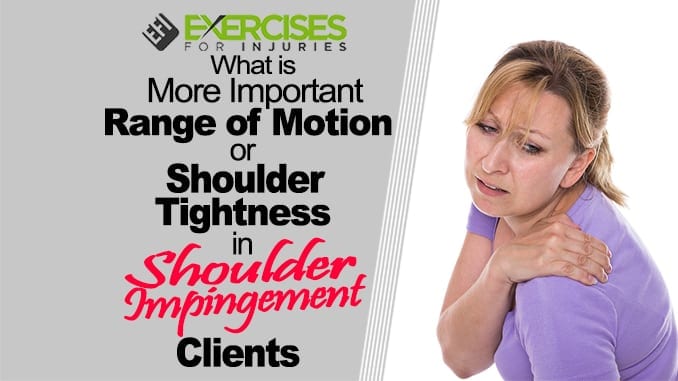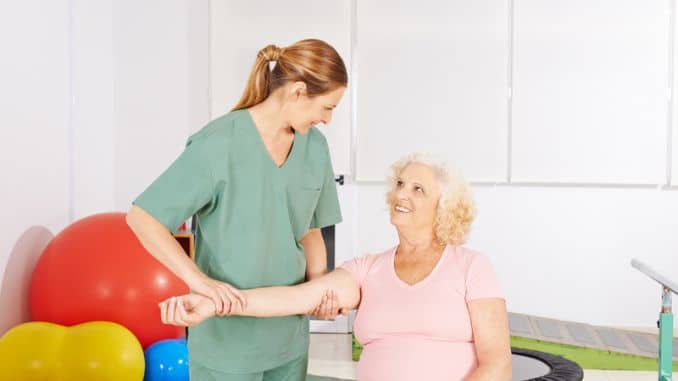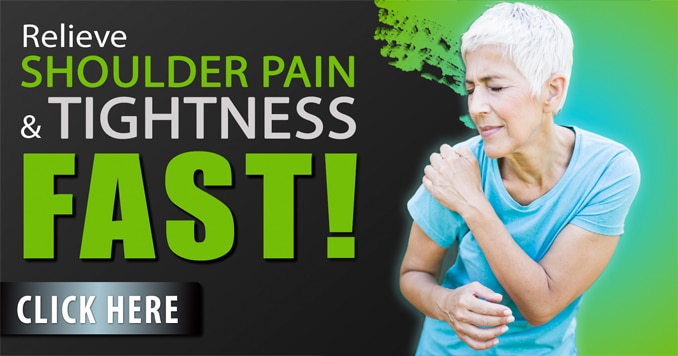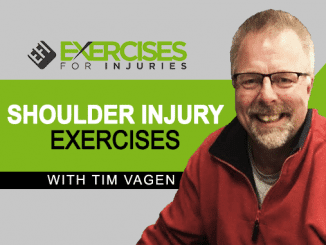
I am a bit of a journal geek and like reading journal articles. I wanted to share with you an article that I read. My wife has House & Home, and I have journal articles from PubMed Central. I will try to filter through all of the mumbo jumbos and stress what you need to know about shoulder tightness to help your clients.
A common injury found in active people is shoulder impingement. Their exercise program often focuses on increasing the range of motion in the affected shoulder. Is this the right thinking? Should the focus be on dropping the tightness of the posterior aspect of the shoulder?
Read on to find out.

Range of Motion versus Decreased Shoulder Tightness
GIRD and posterior shoulder tightness have suggested causative factors in internal impingement of the shoulder, a shoulder injury mainly seen in throwing athletes. The tightening of the posterior shoulder capsule results in irregular motion of the humeral head with passive shoulder flexion, which causes the drop of subacromial space during overhead movements.
Shoulder pain and the completely internal shoulder process develop when the rotator cuff tendons. The humeral head and shoulder socket pinch the posterior labrum Consider GIRD an adaptive mechanism to repetitive overhead motions, where a gradual increase in external rotation and a drop in internal cycle occur.
3 Key Points about Range of Motion and Shoulder Tightness
- Researchers have linked Glenohumeral internal process deficit (GIRD) and posterior shoulder tightness to internal shoulder impingement.
- Clients with internal process impingement who had received stretching and mobilization for 3 to 12 weeks with a physical therapist had a drop in shoulder impingement symptoms.
- People with a drop in shoulder symptoms after stretching and mobilization were the clients with a reduction in posterior shoulder tightness. Improvement in GIRD did not affect symptoms.
Take Home Message (THE PART YOU MUST READ!)
The posterior shoulder is the one that most people know about when they think about the shoulder joint. The posterior of the shoulder is the part that faces toward the back of your body. When you look in your mirror, you see your back, not your arm. Yet, this area is often tight from performing activities like pushing a grocery cart, pulling a heavy weight against gravity, and carrying a heavy backpack.
If you have a limited range of motion in your shoulder, you may feel pain and soreness when doing these activities. If you’ve been with shoulder impingement, it’s important to understand what shoulder tightness is and how to treat it.
Having an appropriate health care professional perform mobilizations on your client with internal process impingement is essential. It is also crucial for you to focus on the posterior aspect of the shoulder.
Plus, what was not mentioned in the abstract was that the subjects also did scapular stabilization exercises and rotator cuff exercises daily. If your client does all four things, they have a good chance of overwhelming shoulder impingement. If they only focus on one, their circumstances don’t look good.
Thanks for reading the blog. I would love to hear what you think of this.
Rick Kaselj, MS






